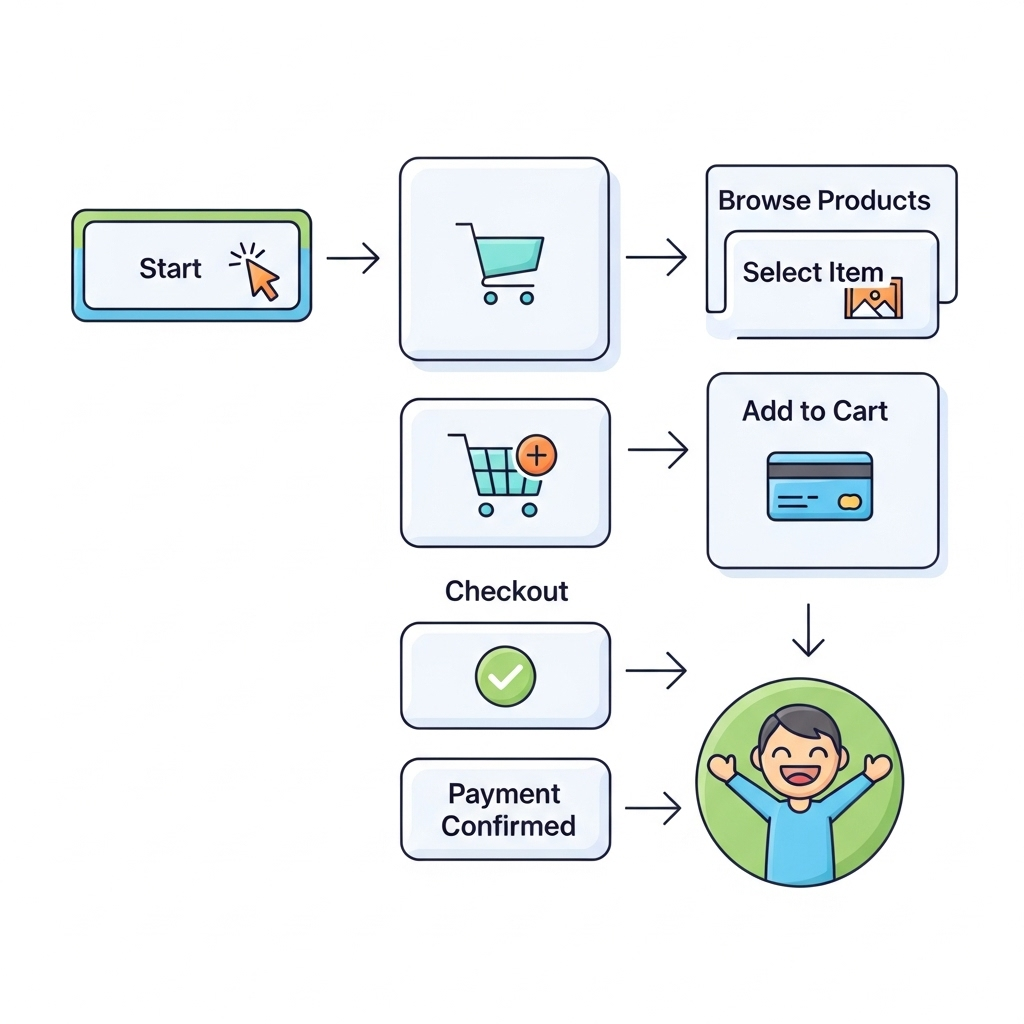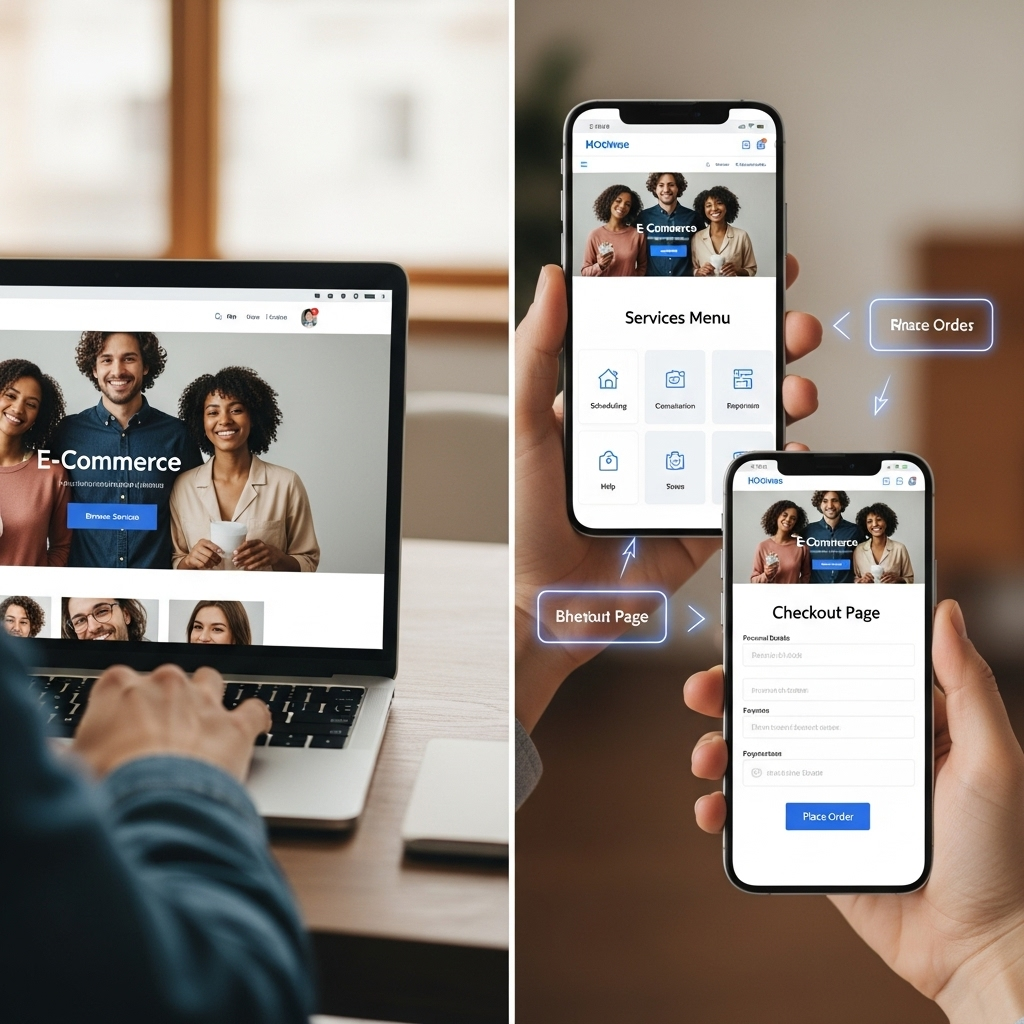Getting users to enjoy your website or app isn’t magic—it’s all about the user flow. Whether you’re a business owner or just curious, understanding user flow can help you see your website through your visitors’ eyes and improve their experience from the very first click.
Understanding the Basics: What is a User Flow?
User flow is simply the path someone takes while using your website or app. For instance, imagine you walk into a store: you browse, pick up what you like, pay at the counter, and then leave. In the same way, a user flow represents the steps your visitors follow to reach a goal—like signing up, buying a product, or finding information. It covers every action, button click, and page switch along the way.

Why User Flow Matters for a Great User Experience
A great user flow allows your visitors to move smoothly from one step to another, just like friendly staff would guide you in a physical store. If users get lost or frustrated, they might simply give up. But, if the process is clear and intuitive, customers are more likely to complete their tasks and leave satisfied. According to Nielsen Norman Group, designing thoughtful user flows can create a more enjoyable and valuable experience for everyone. Plus, when people feel at ease, they’re more likely to trust your brand and keep coming back.
Exploring the User Journey: How Users Interact with Your Website
Every website and app begins with a user journey. The user journey is the story of how someone interacts with your site—from the moment they arrive until they complete their purpose. For example, someone looking for a local bakery might:
- Find your website through a search engine
- Read about your services
- Check your menu or prices
- Place an order or contact you
At every stage, they follow a particular user flow—each click and scroll is part of that path. By mapping these journeys, you can identify where people might get stuck or confused and take steps to improve their experience.

Key Elements of an Effective User Flow
An effective user flow shares a few important features:
- Clarity: It’s always clear what to do next. Buttons are visible, and instructions make sense.
- Consistency: The design and language remain the same, so users don’t feel lost, even as they move from page to page.
- Feedback: When users act—like clicking “submit” or “buy”—they see a clear response, like a thank you note or confirmation screen.
- Guidance: Helpful hints, support, and visible steps ensure users never feel abandoned on their journey.
Great websites and apps carefully plan these details so visitors move naturally from start to finish. For more on designing smooth user flows, you can check out resources like Medium.
Common User Flow Challenges and How to Overcome Them
You might notice that sometimes users drop off before completing their goals, or they ask for help navigating your site. Common user flow challenges include:
- Too many steps to complete a task
- Confusing or hidden buttons
- Unexpected errors or dead ends
- Lack of relevant information at the right time
But these issues are often solvable! Firstly, try to simplify the process—remove unnecessary steps or combine pages if possible. Likewise, preview your site as a new visitor would; you may spot things that are confusing or unclear. Finally, listen to user feedback to learn exactly where people struggle.
Simple Tips to Improve Your User Journey
Improving user flow doesn’t have to be complicated. Here are some easy and actionable tips even if you’re not a tech expert:
- Streamline Navigation: Use clear menus and call-to-action buttons so that users can easily get around.
- Reduce Distractions: Limit pop-ups and unrelated links that may pull users away from their paths.
- Test Regularly: Ask friends or family to use your site and share where they found things easy or confusing.
- Offer Help: Simple help icons, FAQs, or contact options build confidence and support users who need assistance.
Often, small tweaks can make a big difference, boosting both user satisfaction and your business results. And if you need expert help refining your website’s user flow, reaching out to trusted partners like Blanmo can set you on the right path.
Building Trust: How a Clear User Flow Helps Your Audience
When people come to your site, they want to feel secure and taken care of. A clear, thoughtful user flow shows your audience that you value their time and effort. It also encourages trust—after all, if your website is easy to use, visitors are more likely to believe your service or product will be just as reliable. Likewise, well-designed user flows can help people find answers or complete purchases faster, boosting positive feelings toward your brand.
In summary, focusing on user flow is one of the simplest and most effective ways to create a welcoming, trustworthy environment for everyone who visits your digital doorstep. And, as you continue to listen to your users and refine their journeys, your online presence will grow stronger every day.

